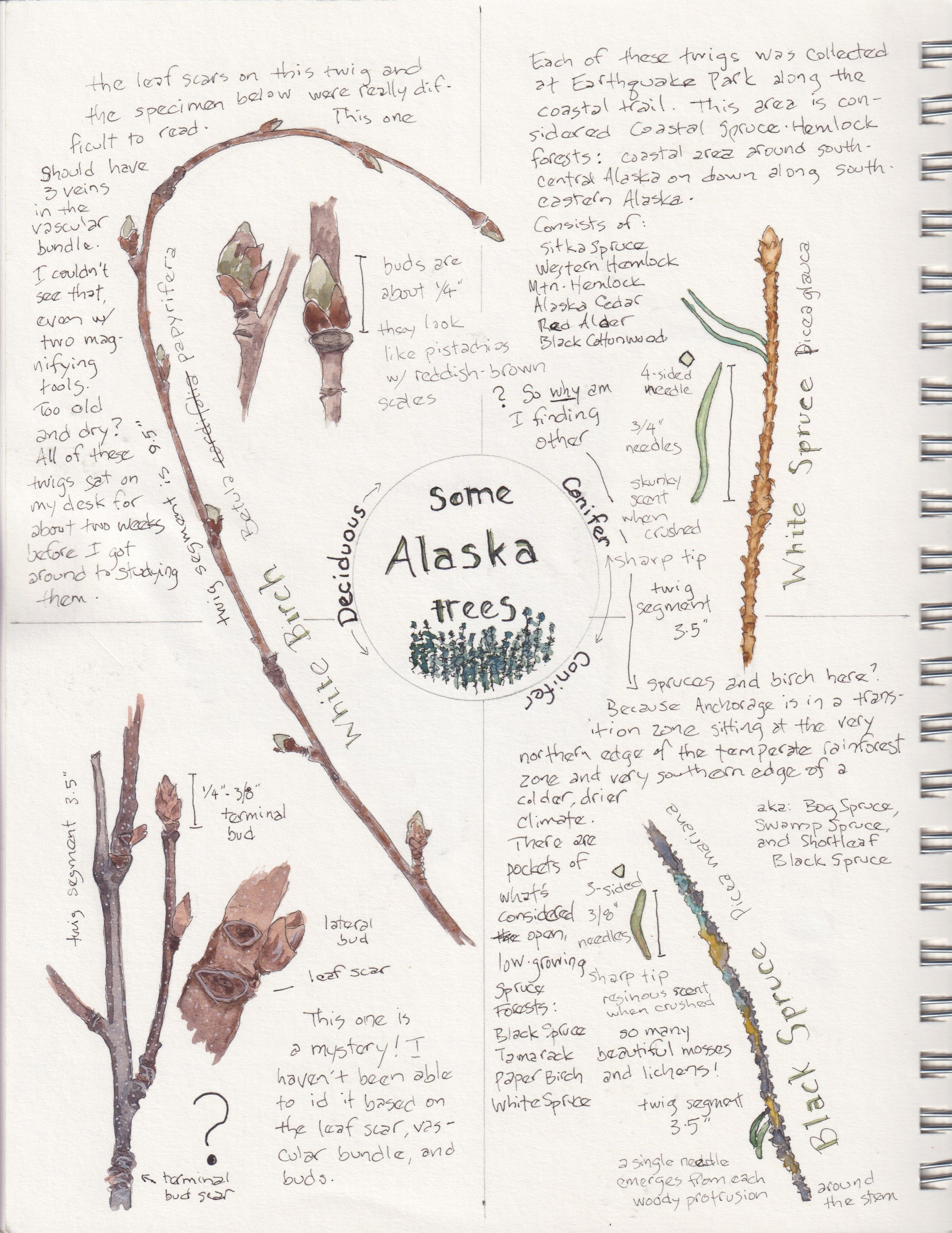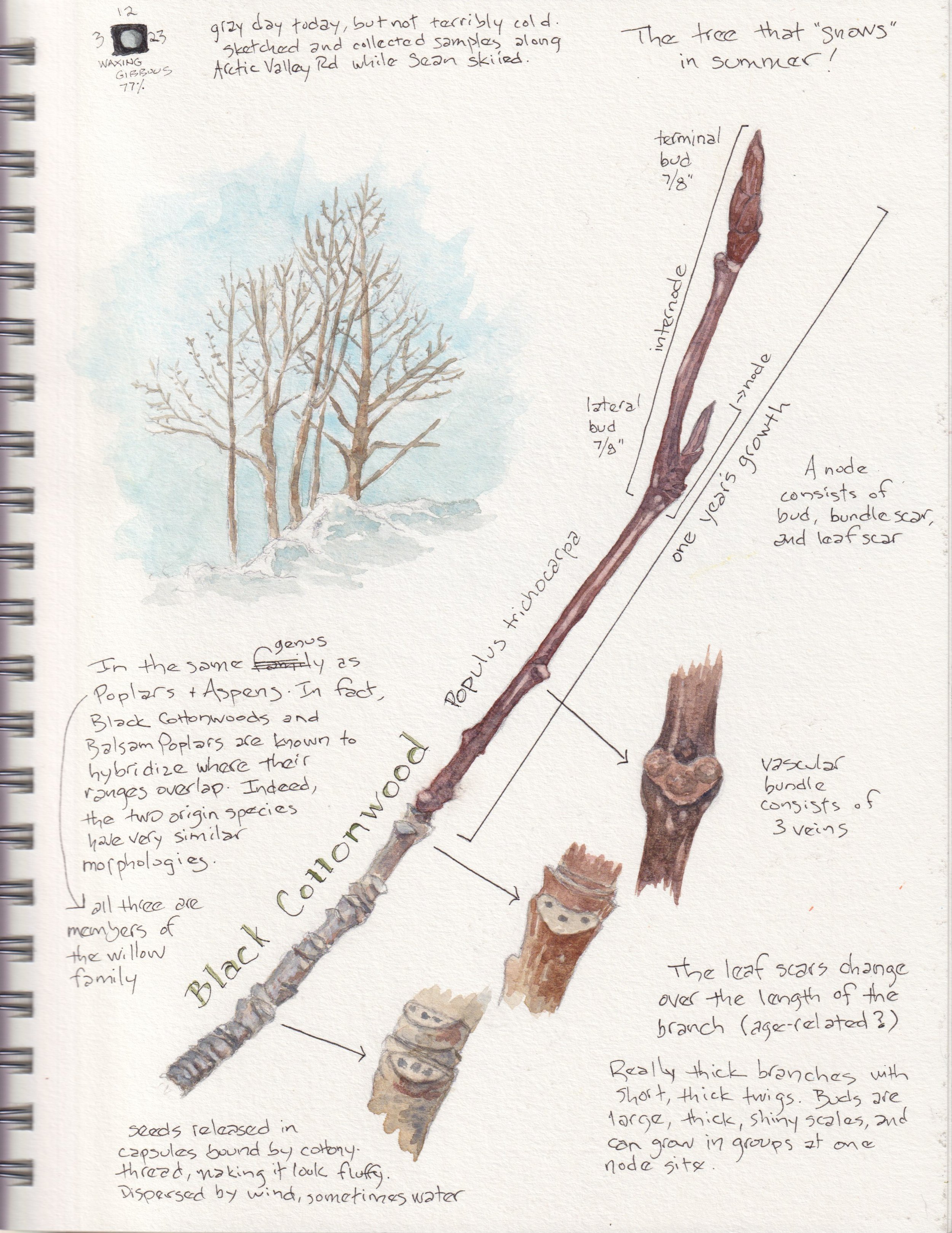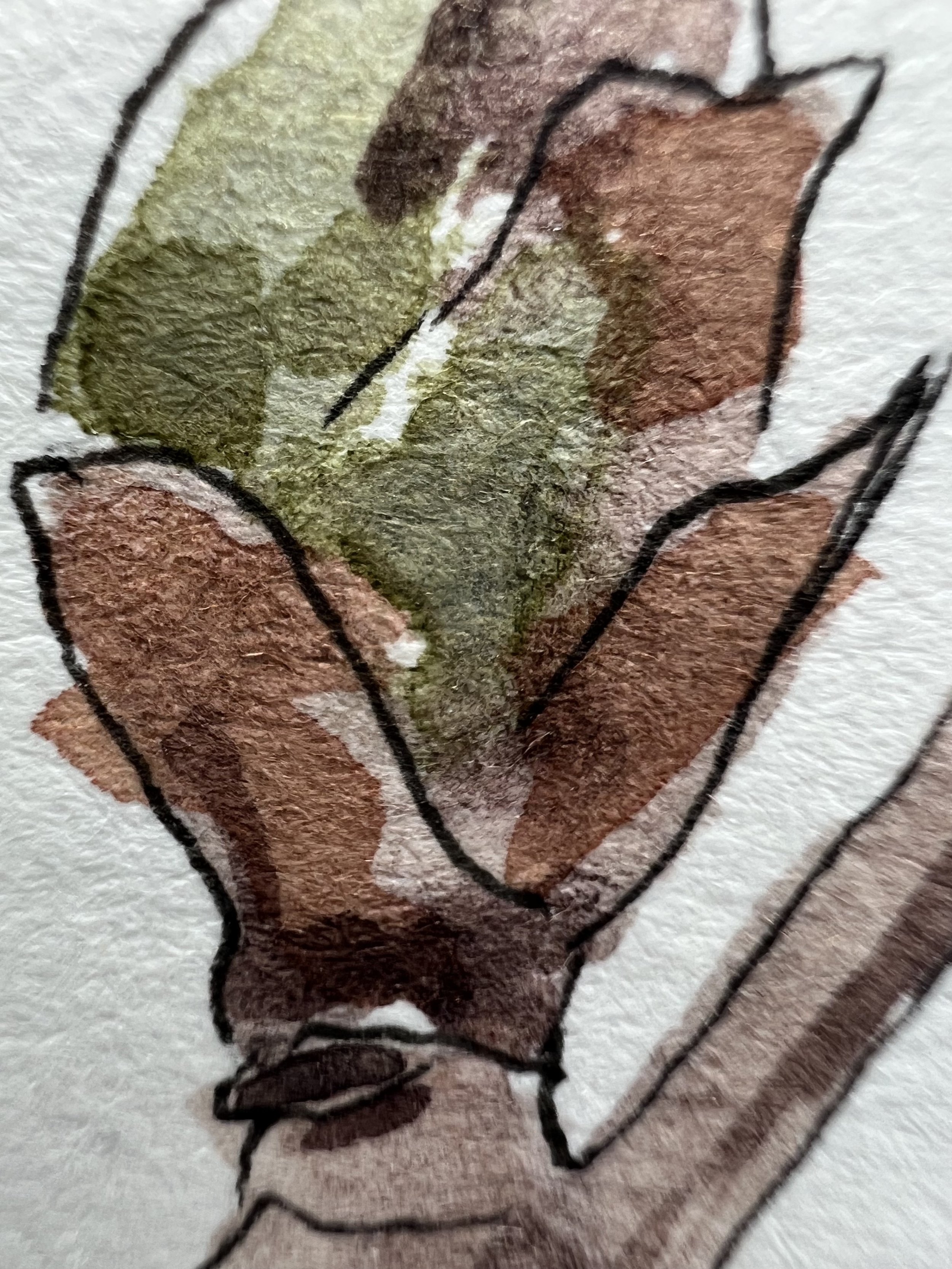Buds and Twigs (not the smoking kind)
Reposted from my March 2023 newsletter, edited for this platform.
One of my favorite early Spring observations each year is watching tree buds begin to swell, paying attention to what's pushing forth to meet the air and sunshine: leaves and flowers!
Back home the tree species I've observed displaying the earliest "wake-up" is the Silver (or Swamp) Maple. Tiny red flowers would usually start popping by late March. The rest of the trees in my forests would follow suit, species by species, until the forest has fully leafed-out.
So it's no surprise that, here in Alaska, something that's been on my list of things to learn are the kinds of trees that live here, too; how the rapidly changing light from one season to the next affects the behavior of these trees. Or does it?
I'm always encouraging my students to learn their local tree species, and giving them tools to do so. Winter is a great time to take a closer look. Seemed time to practice what I preach.
Nine zones are recognized for vegetation types in Alaska: coastal spruce-hemlock forest; closed spruce-hardwood forests; open, low-growing spruce forests; treeless bogs; shrub thickets; moist tundra; wet tundra; alpine tundra; and ice and snow.
Where I reside, Anchorage, several of those zones overlap, which means I can find trees like Sitka Spruce, White Spruce, Black Spruce, Western Hemlock, Mountain Hemlock, Alaska Cedar, Red Alder, Tamarack, Paper (or white) Birch, and Black Cottonwood.
These various communities support a wide variety of vascular plants, of course, including other kinds of woody plants. I'm focused on learning only the trees right now, the naturally occurring species. One thing at a time, right?
Well, the willows, which are not so much a tree but a shrub here, started blooming about two weeks ago! I believe that was the first sign of spring I noticed last year, too, besides the swiftly increasing daylight, the sun hanging higher in the sky, and the return of the gulls.
But that brings me to my overall question. Because the days lengthen here way quicker and more dramatically than back home, does the higher sun and swiftly lengthening daylight trigger the buds to swell and impact the timing of leaf-out here?
Or does something else trigger this seasonal behavior?
I wonder this not only about the plant life but also about the wildlife, especially birds. Last summer, on a trip to the interior region just a few days after the summer solstice (virtually no darkness), some of the birds sang all night long!
I might never know the answer to my question. Most likely, it's a complicated one, with wide ranging affects. Still, I continue to get to know the different tree species around me through my field journal.
My effort to key out the five species I collected got a little frustrating. I expected simple winter twig anatomy (buds, bud scars, leaf scars – collectively known as a node – as well as a few other features absent of leaves, bark, flower and seed) to provide enough clues for id'ing.
Not true! Most keys I came across online wanted leaf, cone, seed, etc. as part of the investigation.
I turned to additional resources like Alaska Trees and Shrubs (U.S. Dept. of Agriculture, 1972) to help me out, plus accumulated knowledge from decades of learning in the field back east and what I've been picking up in field experience here.
You can see my results in the quad of sketches above, and a fifth to the left. One twig was unidentifiable. Any guesses as to who it might be?
Nodes are the part of a twig containing a lateral bud, bud scales, and leaf scar, illustrated in the Black Cottonwood.
Within the leaf scar is the vascular bundle, the place where veins transport water and nutrients from the ground all the way up the trunk, into the branches and twigs, into the leaf itself.
Just for a moment consider the physics involved in getting this fluid to the top of a Sequoia or a Redwood, or even a Sugar Maple.
Yeah, that concept will get your mind twisting to figure it out.
How about this. The shape of a bud scar and vascular bundle arrangement is unique to each species. Whaaat is this you say?
Nature, you're so cool.
One other thing that tickles my spirit is nature's winter palette. Take a closer look at the colors found on these winter twigs. Your browser might allow you to click on the images for an enlarged view.
Incredible, beautiful subtlety.






